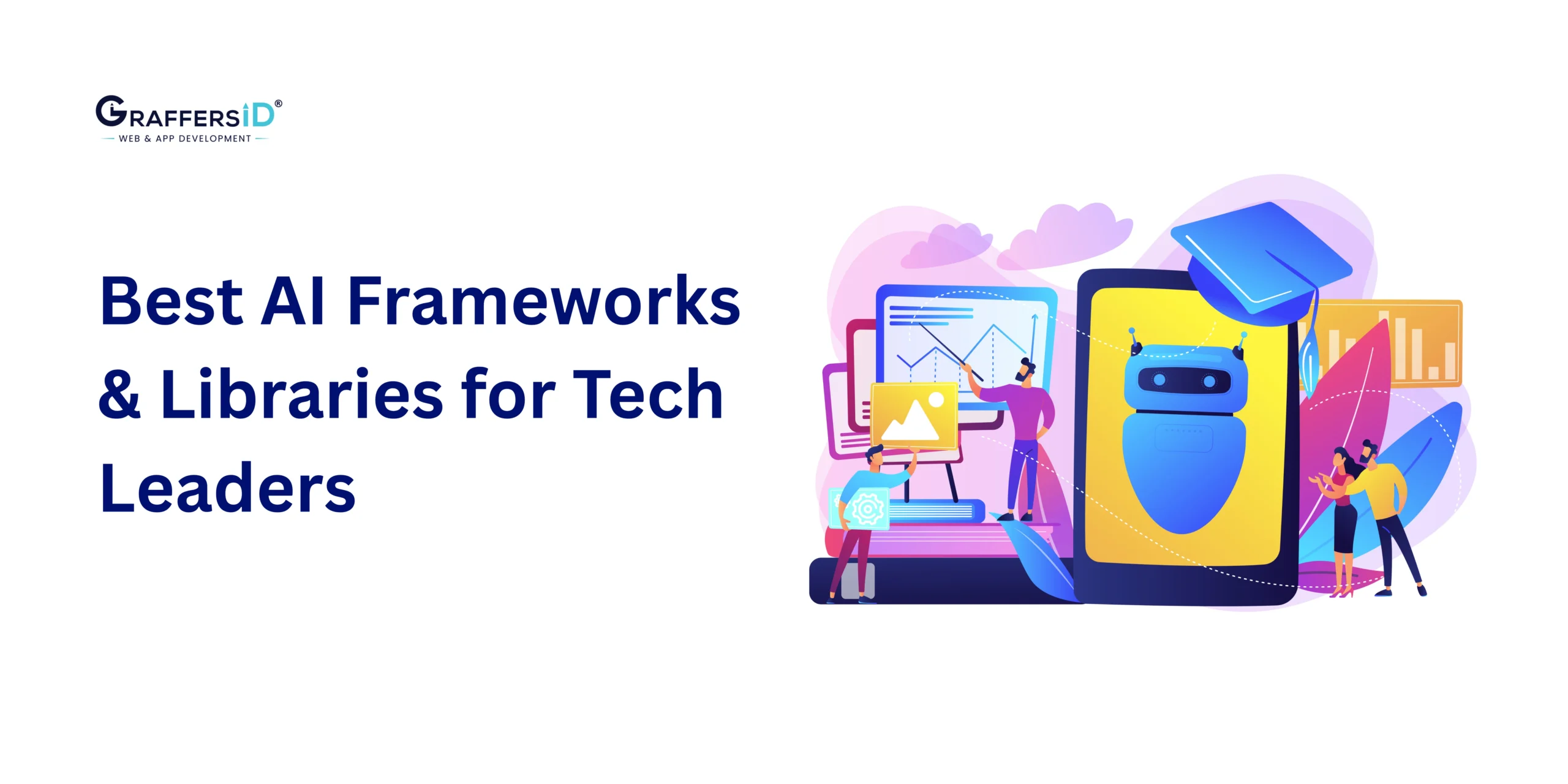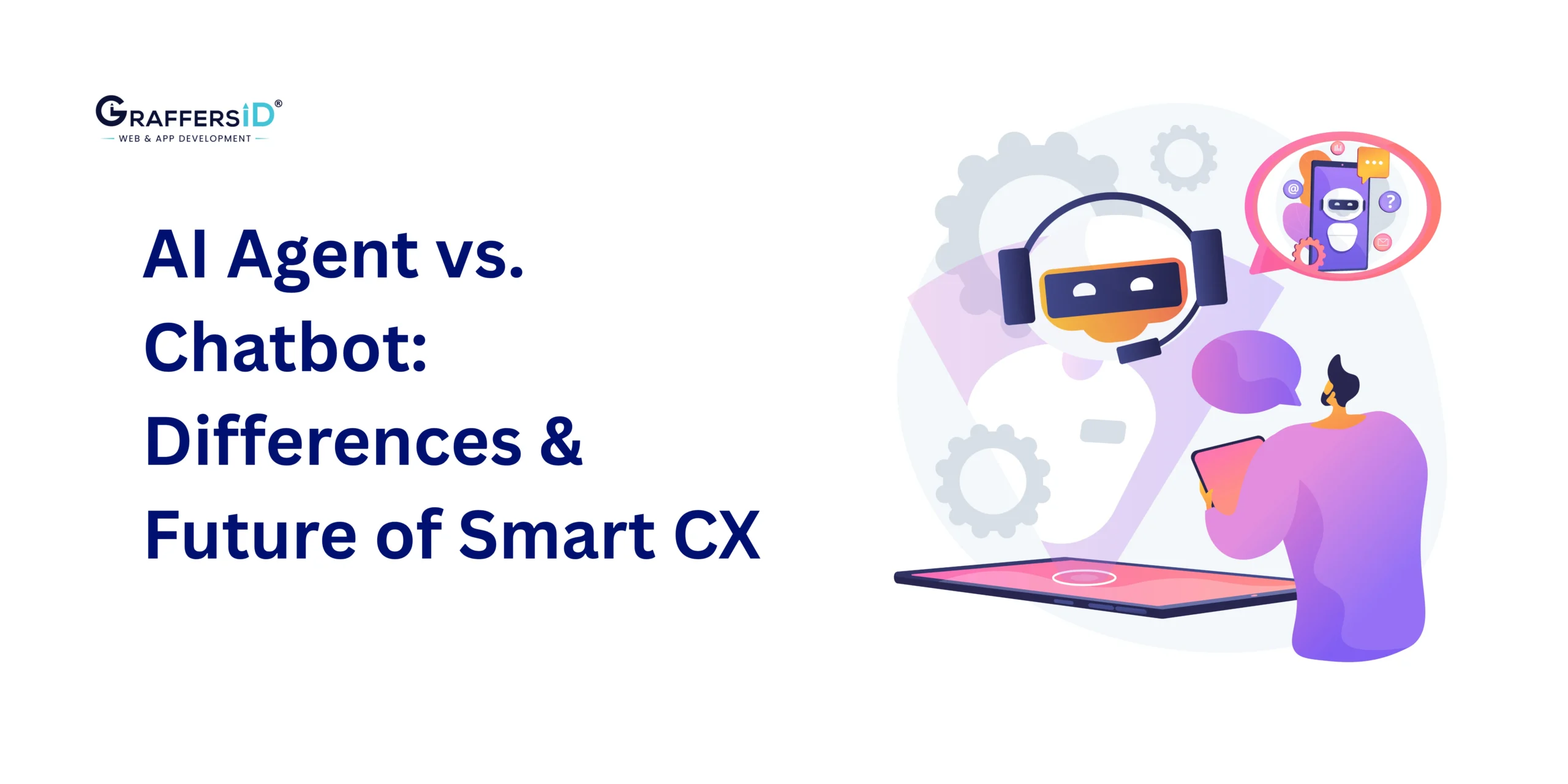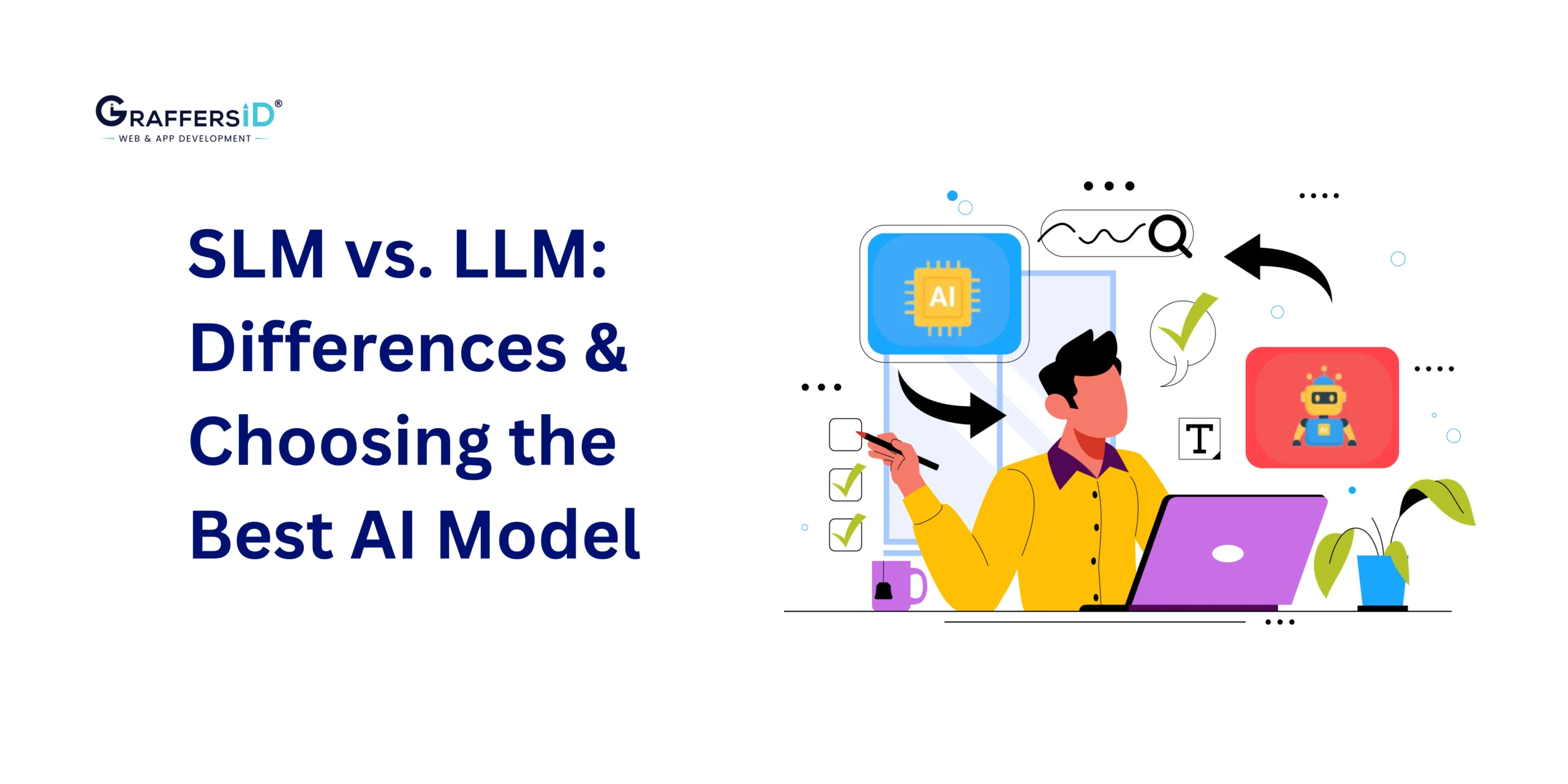Artificial Intelligence (AI) is no longer just a buzzword — it’s the backbone of modern technology. From powering next-gen chatbots and self-driving systems to automating complex workflows, AI is shaping the way leading tech companies operate and scale. But behind every groundbreaking AI application lies a powerful framework or library that makes it possible.
The real question is: which AI frameworks and libraries are driving this transformation today? Whether it’s building large-scale generative AI apps, deploying predictive models in finance, or scaling NLP systems, knowing the right tools can make all the difference.
In this blog, we’ll explore the top 5 AI frameworks and libraries used by leading tech companies in 2025, their features, pros and cons, use cases, and pricing models — so you can choose the right one for your business or project.
5 Best AI Frameworks and Libraries in 2025
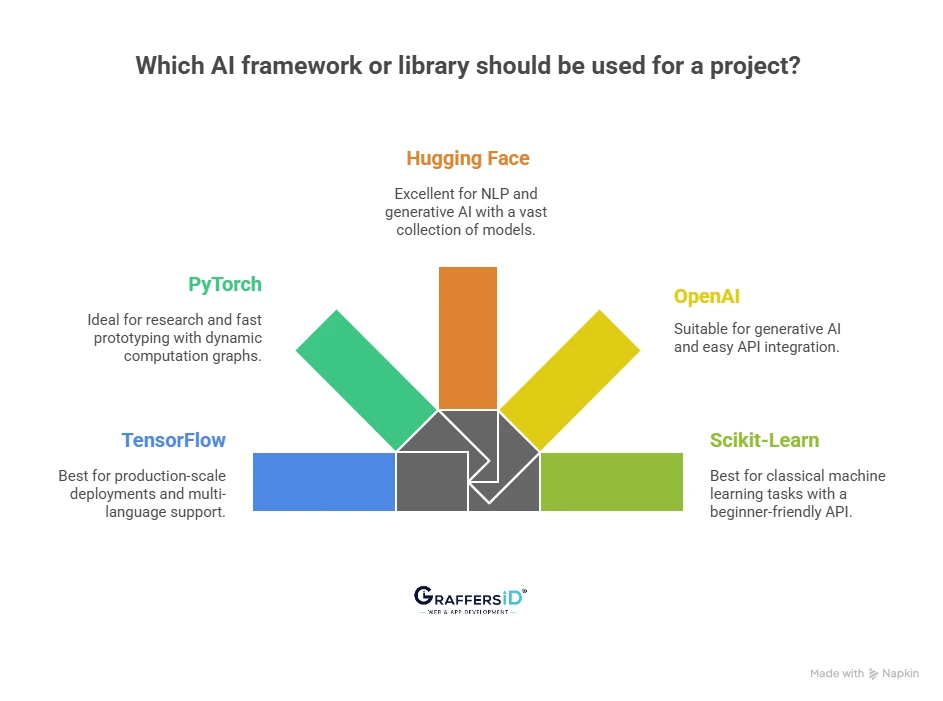
1. TensorFlow
Launched in 2015 by Google, TensorFlow is one of the most widely adopted open-source AI frameworks. Originally built for internal use, it now powers Google Search, Twitter’s ranked timeline, PayPal’s fraud detection, and Spotify’s ML pipelines. Over 1,900+ companies actively use TensorFlow in production.
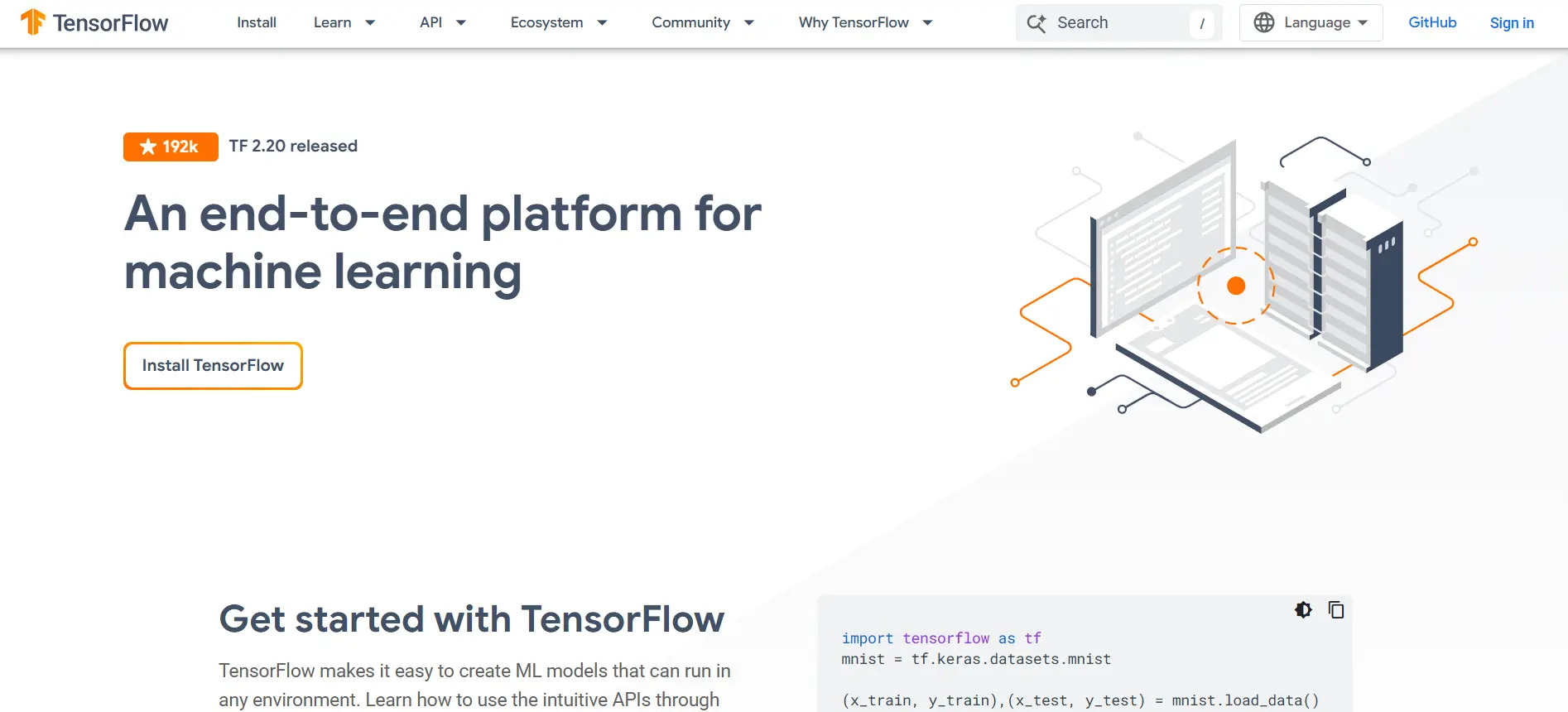
Key Features of TensorFlow
- Complete Ecosystem: TensorFlow Lite (mobile), TensorFlow.js (browser ML), TensorFlow Extended (production ML pipelines), TensorFlow Hub (pre-trained models).
- Multi-language Support: Works with Python, Java, C++, Swift, JavaScript, Go, and more.
- Automatic Differentiation: Simplifies backpropagation and model training.
- Scalable: From mobile devices to thousands of GPUs in the cloud.
- Visualization with TensorBoard: Real-time insights into model performance.
Pros of TensorFlow
- Supports both research prototypes and production-scale deployments.
- Works smoothly across multiple platforms.
- Huge community and Google backing.
- Pre-trained models save time.
Cons of TensorFlow
- Steeper learning curve for beginners.
- Training speed can be slower than PyTorch.
- Limited GPU hardware support beyond NVIDIA.
- Updates between v1 and v2 often confuse developers.
Use Cases of TensorFlow
- Retail & E-commerce: Amazon (customer purchase predictions, pricing models).
- Healthcare: GE Healthcare (deep learning for brain scans).
- Finance: PayPal (fraud detection).
- Entertainment: Spotify (recommendation engine), Twitter (timeline ranking).
- Consumer Apps: Airbnb (object recognition in images), L’Oreal’s ModiFace (virtual try-ons).
Pricing of TensorFlow
- Free and open-source.
- Costs apply only for cloud deployment (Google Cloud, AWS, etc.).
- “Pay-as-you-go” pricing for enterprise projects.
Read More: How to Build an AI Agent in 2025: A Strategic Guide for CTOs and Tech Leaders
2. PyTorch
Developed by Meta AI in 2016, PyTorch has become the go-to framework for researchers and startups because of its dynamic computation graphs and Python-first design. Tesla, Microsoft, and Stanford University all rely on PyTorch.
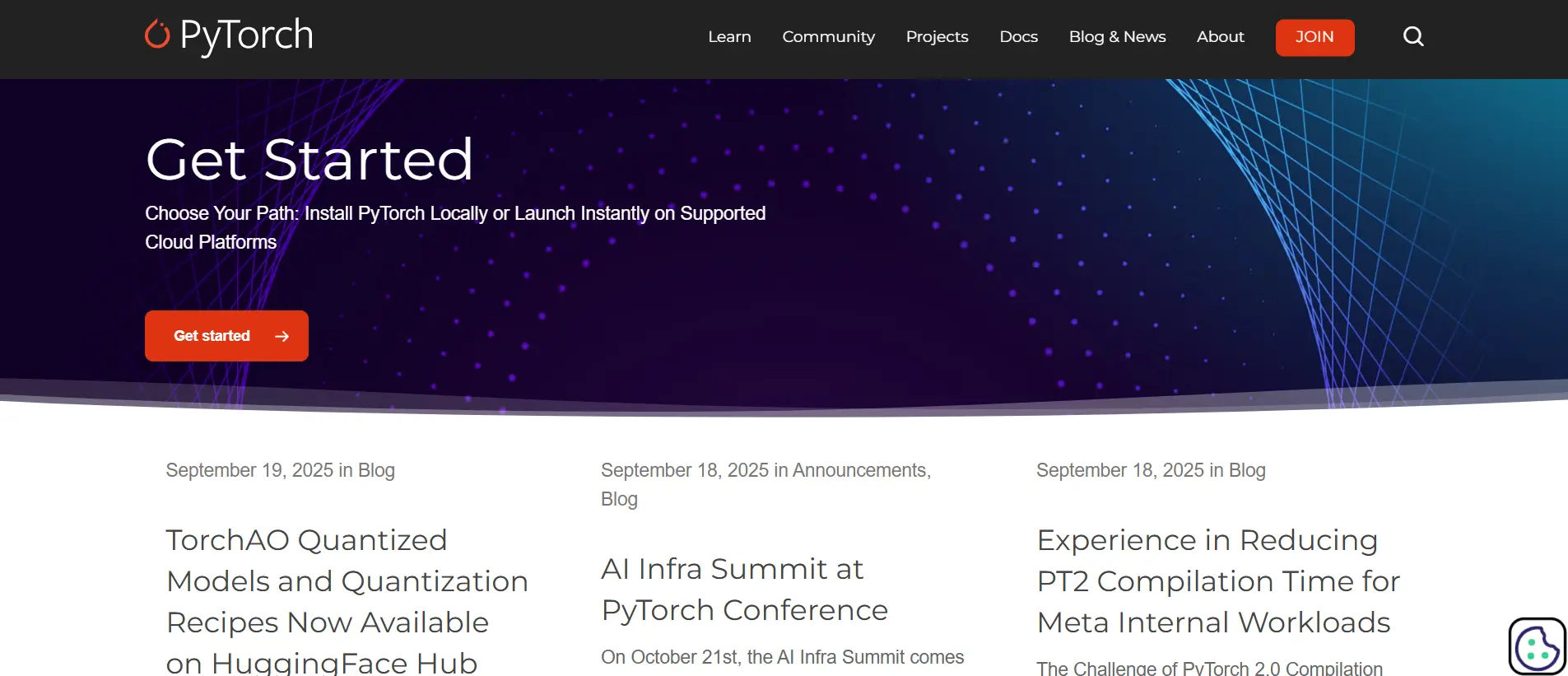
Key Features of PyTorch
- Dynamic Computation Graphs: Build and modify models on the fly.
- Eager Execution: Run code line-by-line (great for debugging).
- Pythonic Syntax: Intuitive for Python developers.
- Rich Ecosystem: TorchVision (computer vision), TorchAudio (speech), TorchText (NLP), TorchServe (deployment).
- Seamless NumPy Integration: Switch easily between NumPy and Torch tensors.
Pros of PyTorch
- Fast prototyping and experimentation.
- Strong community and academic adoption.
- Easy debugging with real-time execution.
- Built-in support for multi-GPU training.
Cons of PyTorch
- Weaker visualization tools compared to TensorFlow.
- Production deployment is more complex.
- Smaller ecosystem than TensorFlow.
- Limited mobile support.
Use Cases of PyTorch
- Computer Vision: Object detection, image classification (Tesla Autopilot).
- NLP: Sentiment analysis, machine translation (research labs worldwide).
- Reinforcement Learning: Robotics and gaming AI.
- Generative AI: GANs, Stable Diffusion, and LLMs.
- Enterprise: Microsoft Bing, Airbnb customer support, LinkedIn AI tools.
Pricing of PyTorch
- Free and open-source.
- Cloud deployment costs depend on compute usage.
- Developer salaries range from $15/hour (junior) to $120/hour (senior), depending on expertise.
3. Hugging Face
Founded in 2016, Hugging Face evolved from a chatbot startup to the “GitHub of Machine Learning”, hosting 1.7M+ models, 400K datasets, and 600K+ ML demos. It’s the go-to platform for NLP, generative AI, and open-source AI adoption.
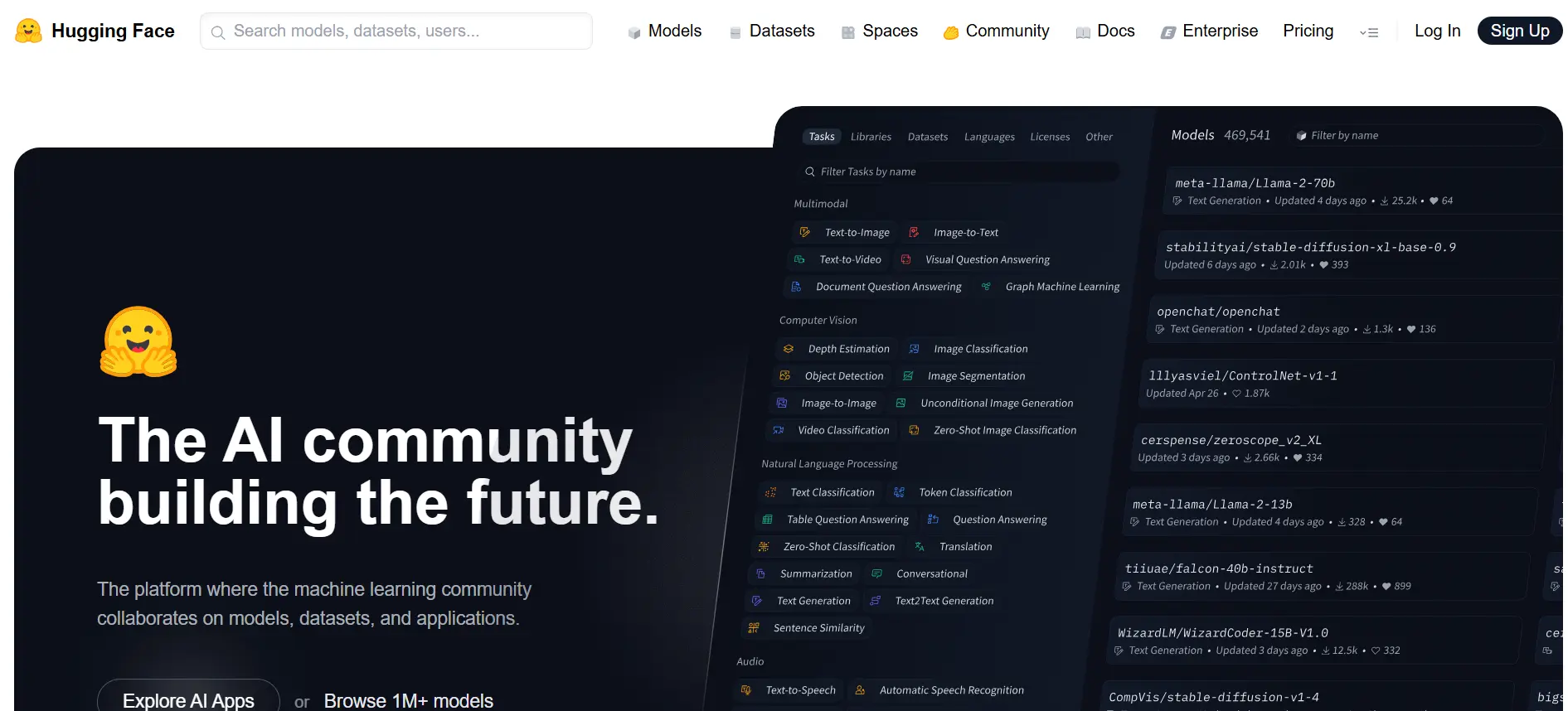
Key Features of Hugging Face
- Transformers Library: Pre-trained models like BERT, GPT, RoBERTa, etc.
- Hugging Face Hub: A collaborative space for models, datasets, and apps.
- Datasets Library: 1,000+ ready-to-use datasets with streaming support.
- Spaces: Host ML demos using Gradio or Streamlit.
- Tokenizers: Fast and efficient text preprocessing.
Pros of Hugging Face
- Thousands of ready-to-use AI models.
- Easy to learn for beginners.
- Active global AI community.
- Tools for enterprise deployment (Inference Endpoints).
- Focus on transparency and responsible AI.
Cons of Hugging Face
- Free tier has limited compute power.
- Search can feel clunky due to the huge repository.
- Community-trained models may vary in quality.
- Data security concerns for enterprise adoption.
Use Cases of Hugging Face
- NLP: Sentiment analysis, text summarization, machine translation.
- Computer Vision: Image detection and classification.
- Speech AI: Speech-to-text and voice recognition.
- Enterprise AI: Used by Thomson Reuters and AWS for enterprise-scale deployments.
- Education & Research: Popular among students and academics for quick prototyping.
Pricing of Hugging Face
- Free tier: Models, datasets, and community tools.
- Pro ($9/month): Extra compute, private datasets.
- Team ($20/user/month): SSO, team controls, logs.
- Enterprise ($50+/user/month): Custom onboarding, compliance, and premium support.
4. OpenAI
OpenAI, founded in 2015, has transformed from a research lab to the leader in generative AI. Its tools like ChatGPT, Codex, DALL·E, Whisper, and GPT-5 are widely used by startups and enterprises alike.
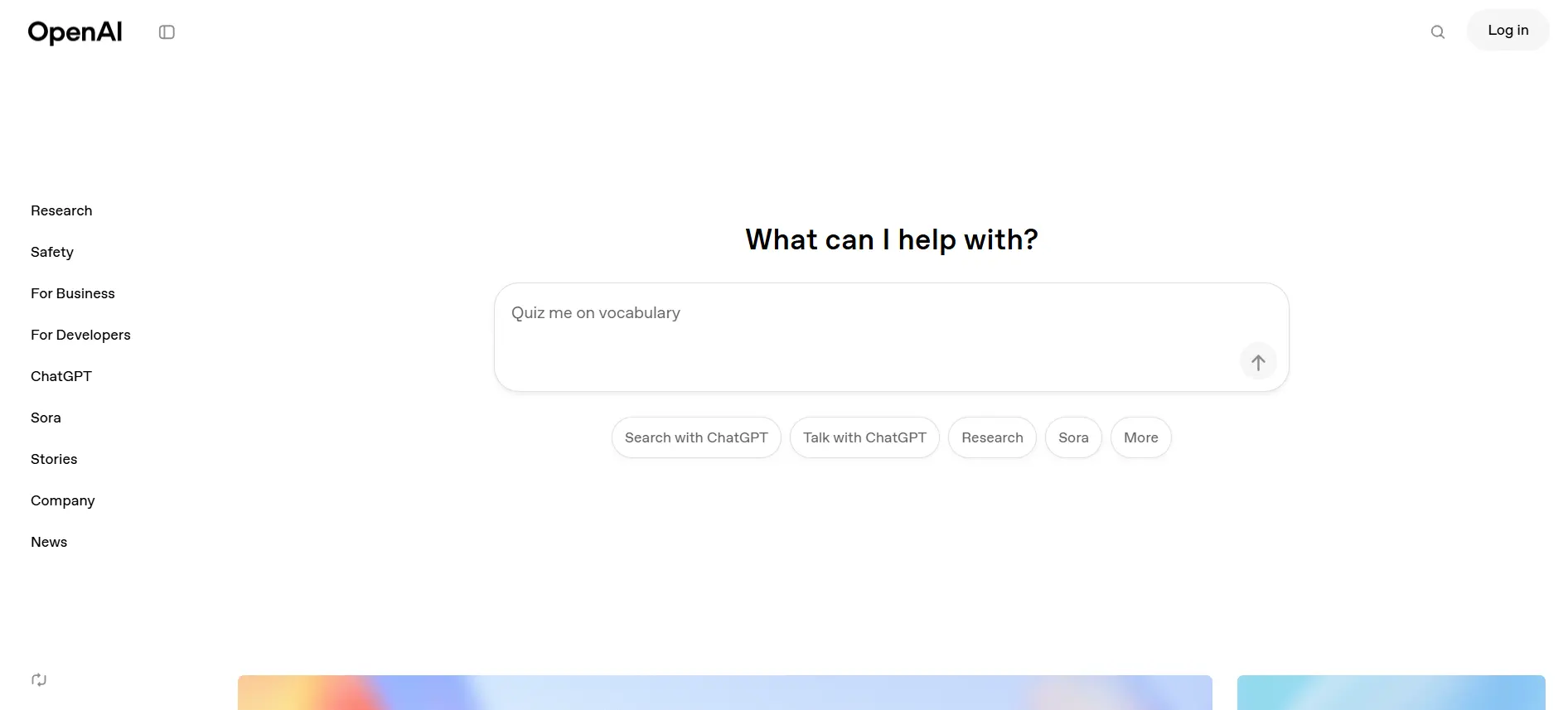
Key Features of OpenAI
- Advanced Language Models: GPT-5, GPT-5 Mini, GPT-5 Nano.
- Multimodal AI: Text, code, images, and audio generation.
- APIs & Integrations: Works across apps, websites, and platforms.
- Custom AI Agents: Build domain-specific chatbots and automation tools.
- Ethical & Safety-first Approach: Bias reduction and responsible AI focus.
Pros of OpenAI
- Extremely easy to integrate via API.
- Saves time and reduces costs in workflows.
- Supports text, images, audio, and code.
- Reliable accuracy for enterprise tasks.
Cons of OpenAI
- Limited specialization for niche domains.
- Risk of biased or outdated outputs.
- Pricing can scale quickly for large usage.
- Ethical and copyright concerns around training data.
Use Cases of OpenAI
- Content Creation: Blogs, social media, marketing.
- Code Generation: Codex converts natural language to code.
- Customer Support: AI-powered chatbots.
- Research: Fast access to insights across topics.
- Image & Video AI: DALL·E generates creative visuals.
Pricing of OpenAI
- GPT-5: Input $1.25/1M tokens | Output $10/1M tokens.
- GPT-5 Mini: Input $0.25 | Output $2.00.
- GPT-5 Nano: Input $0.05 | Output $0.40.
- Realtime API (multimodal): Text $4.00 | Audio $32.00 per 1M tokens.
- Image Generation: Text input $5.00 | Image input $10.00 per 1M tokens.
- Flexible subscription and enterprise plans available.
Read More: How to Select the Right AI Tech Stack for Web Development
5. Scikit-Learn
Scikit-Learn, released in 2010, is the most trusted Python library for classical machine learning. Unlike TensorFlow and PyTorch (deep learning), Scikit-Learn is widely used for traditional ML tasks like classification, regression, and clustering.
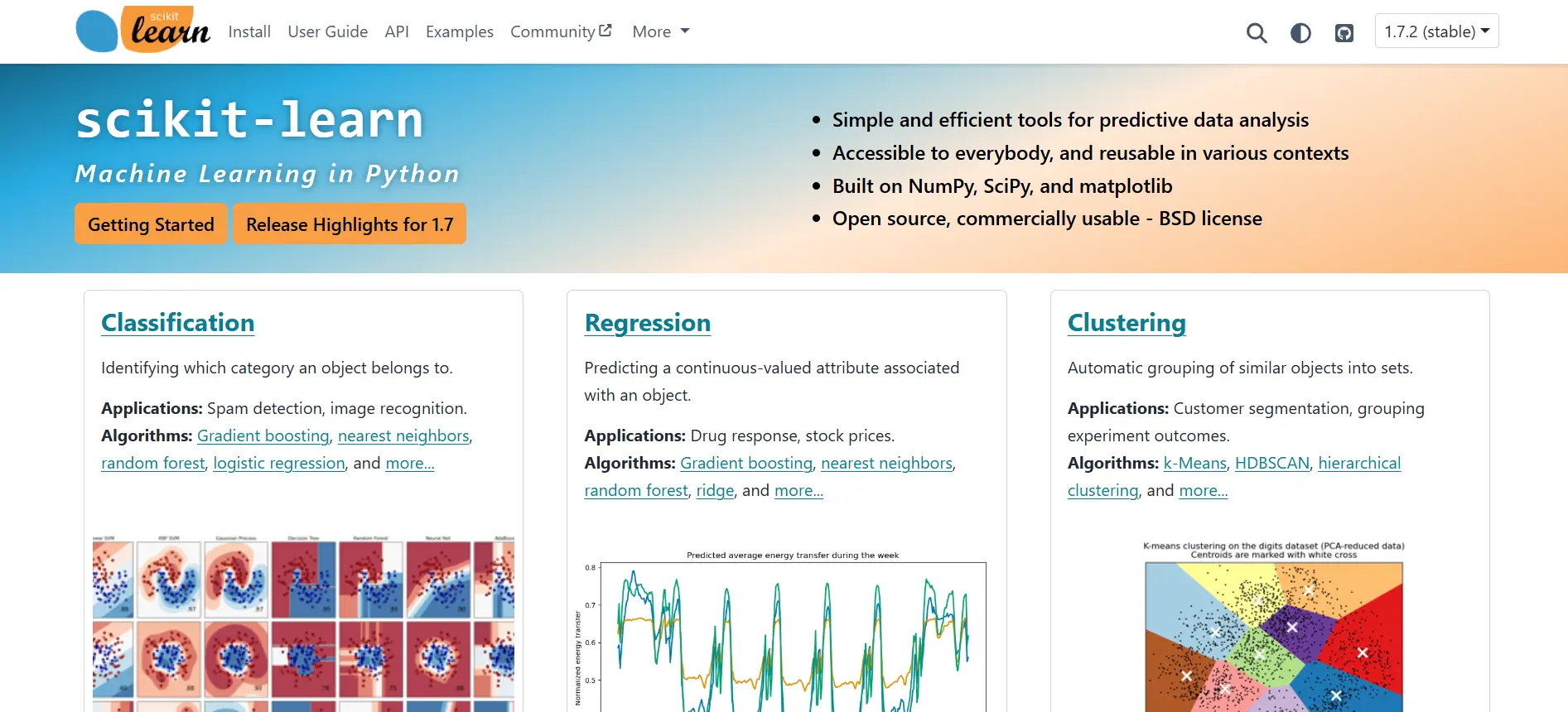
Key Features of Scikit-Learn
- Wide Algorithm Collection: Regression, classification, clustering, and dimensionality reduction.
- Seamless Integration: Works with NumPy, pandas, SciPy, and matplotlib.
- Consistent API: Easy to switch between models.
- Model Evaluation: Cross-validation and built-in metrics.
- Data Preprocessing Tools: Scaling, encoding, and missing-value handling.
Pros of Scikit-Learn
- Extremely beginner-friendly.
- Well-documented and easy to learn.
- Efficient for small-to-medium datasets.
- Works seamlessly in the Python ecosystem.
Cons of Scikit-Learn
- No native deep learning support.
- No GPU acceleration (CPU only).
- Memory constraints with very large datasets.
- Not ideal for time-series data.
Use Cases of Scikit-Learn
- Finance: J.P. Morgan (predictive analytics).
- E-commerce: Booking.com (recommendation engines).
- Healthcare: Disease classification and patient data analysis.
- Digital Marketing: Change.org (targeted campaigns).
- Research: Genomics, physics, and scientific data modeling.
Pricing of Scikit-Learn
- 100% free and open-source.
- Commercial use allowed (BSD License).
- Costs only involve compute and developer expertise.
AI Frameworks Comparison Table (2025 Guide)
| Framework | Origin | Key Features | Main Use Cases | Pricing |
| TensorFlow | Graph-based ML, ecosystem, multi-language, TensorBoard | Retail, Healthcare, Finance, Social Media | Free (cloud costs extra) | |
| PyTorch | Meta AI | Dynamic graphs, eager execution, Pythonic syntax | CV, NLP, RL, Generative AI | Free (cloud costs extra) |
| Hugging Face | Community-driven | Transformers, Hub, Datasets, Spaces | NLP, Vision, Speech, Enterprise AI | Free + Paid tiers |
| OpenAI | OpenAI | GPT-5, multimodal AI, APIs | Content, Code, Research, Support | Token-based |
| Scikit-Learn | Open-source | ML algorithms, API, evaluation tools | Finance, Healthcare, Research | Free |
Key Factors to Consider Before Selecting an AI Framework in 2025
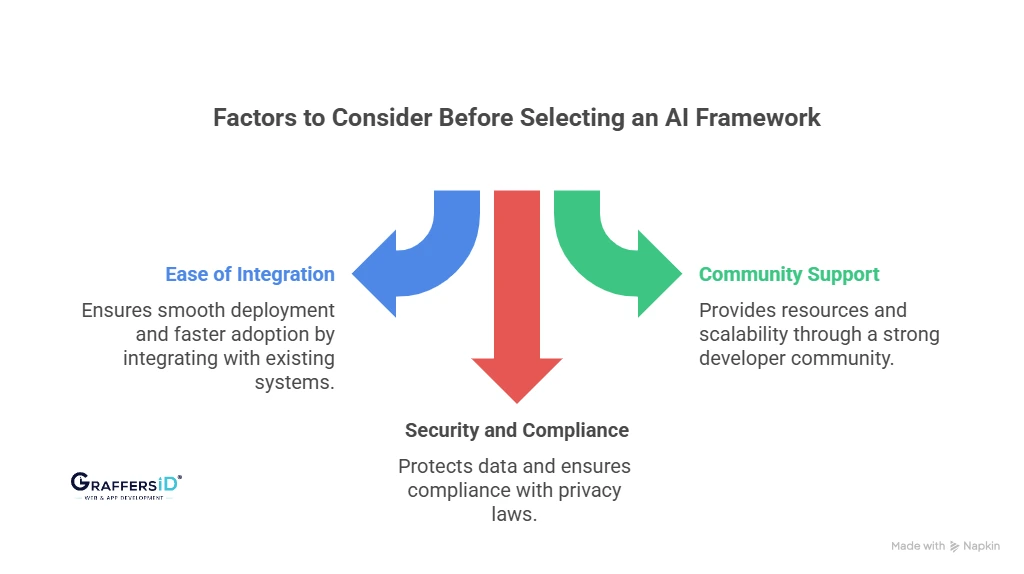
1. Ease of Integration
The best AI frameworks in 2025 are those that seamlessly integrate with existing tech stacks, cloud platforms, and APIs. Smooth integration reduces deployment time and ensures faster adoption across teams.
2. Community Support & Ecosystem
A strong developer community and a rich ecosystem of plugins, tutorials, and pre-trained models make AI frameworks easier to adopt. In 2025, frameworks with active open-source backing are preferred for scalability and continuous innovation.
3. Security and Compliance
With stricter data privacy laws like GDPR updates and AI-specific regulations, security and compliance are non-negotiable. Leading AI frameworks now prioritize built-in safeguards to help businesses stay compliant while protecting sensitive data.
Conclusion
Artificial Intelligence is evolving faster than ever, and the frameworks and libraries powering it are shaping the future of businesses worldwide. From TensorFlow’s scalability to PyTorch’s flexibility, these tools are what leading tech companies rely on to innovate, automate, and stay competitive in 2025.
The key takeaway? Choosing the right AI framework or library isn’t just about development—it’s about unlocking growth, efficiency, and long-term scalability. Whether you’re a CTO, startup founder, or enterprise leader, aligning your tech stack with the right AI tools can determine how fast and effectively your organization adapts to this new digital era.
If you’re looking to leverage AI for your business with skilled developers and tailored solutions, GraffersID can help you hire remote AI experts to bring your vision to life.
